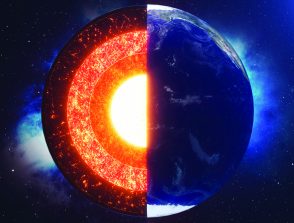Resolving 70 Million Years of Earth’s Rotational History: Paleomagnetic Validation of a Seismic Tomography–Based Mantle Convection Model
16/10/2025
IPGP - Îlot Cuvier
14:00
Séminaires thème Intérieurs de la Terre et des planètes
Salle 310
Alessandro Forte
University of Florida & IPGP
Mantle convection alters Earth’s inertia tensor, driving re-orientation of the spin axis known as true polar wander (TPW). We combine global seismic tomography with a back-and-forth-nudging reconstruction to recover mantle-density evolution and the associated moments of inertia for the past 70 Myr. Our results show that TPW can exceed five degrees, despite stabilizing factors such as high viscosity in the lower mantle and Earth’s remnant rotational bulge. The preferred convection model reproduces palaeomagnetic inferences of TPW path across multiple reference frames – notably the recently proposed ‘tectonic-rules’ frame (achieving reduced χ² ≈ 0.6 when accounting for frame uncertainties) – and captures the enigmatic reversal (‘U-turn’) in TPW path near 50 Ma. We explicitly trace the origin of this event to past subduction under the North-Pacific Ocean during the Late-Cretaceous and Paleocene. Here Kula–Izanagi lithosphere descended almost vertically across the upper mantle by 50 Ma and then sank quickly through the lower mantle. These results resolve the amplitude and direction mismatch in earlier flow models, quantify the impact of reference-frame choice, and demonstrate how specific slab-flux pulses govern Earth’s rotational stability. Verification of predicted variations in Earth’s ellipsoidal figure, based on these paleomagnetic constraints, provides a robust reference point for forecasting convection-induced dynamic flattening. Over the 70-million-year interval, we document changes in flattening that range from -0.2% to +0.1% during the Paleogene. Furthermore, our predictions of Paleogene axial precession frequency align with recent independent cyclostratigraphic analyses, offering strong evidence for the accuracy of our modeland reinforcing the hypothesis of strongly diminished luni-solar tidal dissipation during that period.





